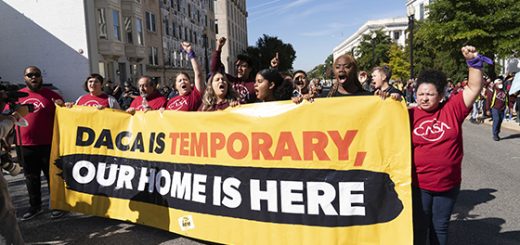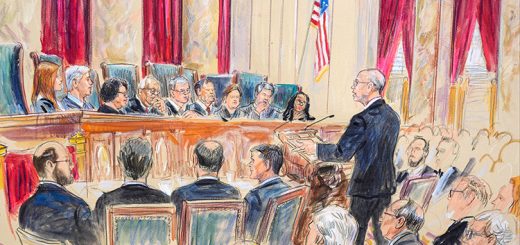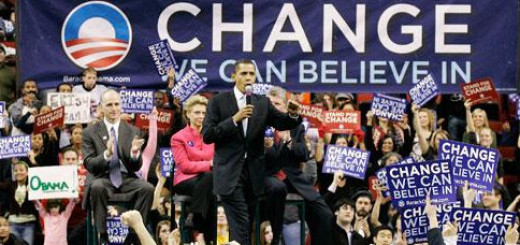Graduating to service debt.

Click here to listen to the broadcast of You Tell Me on KTBB AM & FM, Friday, Apr. 22, 2011.
Hundreds of thousands of young men and women across the country are about to don cap and gown, listen to a platitude-laden commencement address and then traipse across the stage to be handed a college diploma. Hundreds of thousands of parents, grandparents, aunts, uncles and family friends will celebrate.
It was not always thus. Prior to World War II, only a small percentage of high school graduates attended college. But the G.I. Bill, passed in 1944, was catalytic. It took farm kids and working class kids and made them the first in their families to earn a college degree.
The G.I. Bill had a very specific and narrow focus. The law was aimed solely at returning servicemen. It sought to avoid the dislocations that would surely have resulted if millions of young men returning from war had all re-entered the economy at once. The G.I. Bill acted as a buffer while it created a new cohort of educated young men at a time in our history when the transition from an agricultural economy to an industrial economy was being completed.
The country got its money’s worth from the G.I. Bill. The World War II veterans that took advantage of it created an educated workforce that went on to build the most successful economy in world history.
But the success of the G.I. Bill was over-interpreted. It led to the Higher Education Act of 1965, part of Lyndon Johnson’s Great Society, and created federally subsidized student loans.
Just about any kid, regardless of his or her creditworthiness, can get a student loan. This, coupled with a near universal belief that every high school kid should aspire to college, has led to a demand-supply imbalance.
Put simply, nearly unlimited student loan availability has removed the price signals that would have otherwise kept prices for college in check. Thus the price for college is outpacing inflation by as much as five-to-one.
Today, two of three kids are graduating college laden with debt. Aggregate student loan debt exceeds $1 trillion and is now a greater debt overhang on the national economy than credit cards
Because college under this financing model comes to be seen as an extension of public education, neither students nor their parents are conducting any meaningful cost benefit analysis. Partially as a result of that college curricula have been filled with classes on things like ethnic diversity, environmentalism, gender studies, feminism and numerous other mostly left-leaning courses.
All tolerable perhaps except for the fact that the ability to hold forth on the role of feminism in post-modern Western society is not in high demand by employers just now.
And it’s this disconnect that now looms for the graduating class of 2011.
Such is what happens when the government intrudes into just about any market for goods and services; even with the best of intentions.
If parents and students were bringing their own hard-earned cash to the table on registration day at college, the cost would be lower and the curriculum would be more tightly connected to the long-term economic interest of the student.
That would be a giant step in the right direction toward healing America’s broken economy.








Seems to me that LYNDON JOHNSON messed up a lot of the economy of this great country (encouraging women to have kids without being married and then “paying” them for the “opportunity” – this did a great deal to harm the family nucleous of married parents – many kids did not have DAD in their life at all)
my perspective is to return to the “old fashioned way” – revert to using the ground rules BEFORE Johnson began the “great society” – hold EVERYONE accountable for their actions from obama on down to first graders – TEACH the children and the PARENTS when necessary that they may not get all they want but they need to work hard to get what they do want – stop the giveaways – and for a period of 6 months – review all EXISTING student loans and if the student is now an adult (over 25 years old) “forgive” the loan balance and let them start clean – at the same time, for a period of 6 months, allow ALL retirees/people over 65, to withdraw up to $100,000 from their 401k or other retirement fund – TOTALLY TAX FREE – no tax of any kind, local, state, federal, would be applicable to this money
this would allow many seniors to stop benefits from government as it would help them pay their bills while not incurring more tax
keep up the good work
we always enjoy listening to your input on subjects and thank you for sharing and allowing us the opportunity to share back
kd, td, cd, km, wm, ws, jf, jm, lo, jm (and the others in our “golden age” group
I remember my Grandmother and Grandfather speaking with distain about roooosevelt(as they pronounced it)and all he did. Later, the same amount of distain was for LBJ. They could see what the policies enacted by both were going to do to society. They saw what the “great society” LBJ spoke about was and wanted no part in it. My Grandparents never had a whole lot, but were adamant about NOT taking anything from the government. Why? Because they did not want to be beholden to the government. They believed in working hard and doing things for yourself without government interference. My Grandparents faith in God and themselves pulled them through the hard times of the depression. They taught me that hard work and determination was the way to go.
The GI bill is just one example of a good thing that has morphed into a government tentacle which has put a stranglehold on those who were seduced into it’s deceptive goodness. All these so called great government programs, have lead to the problems we are seeing today. In a rush to make more and more people dependent upon the government and a lack of vision as how to pay for all these government programs, has finally caught up to us. I agree with Katt that we need to take a step back and go back to some good old fashion common sense and personal responsibility the way my Grandparents taught me. One thing my Grandmother constantly told me was not to use credit cards, to pay as you go. It took me a while to see the importance of what she tried to tell me, but it finally dawned on me when I became over extended, seduced by the ease of just handing over a card and worrying about paying for it later. It took a total change in my attitude and a lot of determination to not let that happen again. And it hasn’t. This is a lesson our government hasn’t learned yet,but needs to!
Paul,
I totally agree with your statement that government funding of higher education has distorted market forces associated with public education: “Because college under this financing model comes to be seen as an extension of public education, neither students nor their parents are conducting any meaningful cost benefit analysis.” You also alluded to the fact that “college curricula have been filled with classes … on numerous other mostly left-leaning courses.”
I would like to expand on the government influence on the curricula. Every citizen that pays for the public education system in this country at the federal, state, and local levels of government should understand that they are paying for an educational system for their child that is infested with Socialism and Humanistic principles that have nothing to do with Reading, Writing, and Arithmetic. If parents don’t monitor and challenge the curriculum being taught by these self serving bureaucratic agencies (called schools) then they risk the indoctrination of their precious offspring that will ultimately turn the future of this nation into a country that treats humans as members of a collective, devoid of individual liberties and unalienable rights as guaranteed by the Constitution. Am I being paranoid? The evidence is hidden in plain sight!
The left-wing propaganda slant of the mainstream media in this country is the result of indoctrination of the Socialist dogma that has permeated every corner of higher education for the last 40 years. Where do you think the teachers in the public schools come from? The answer is: the SAME INSTITUTIONS. Are you parents being vigilant about the potential for your own children being force fed these Socialist philosophies that are foreign to the basic fundamentals of personal freedom that founded this country? I hope so! Deception is the name of the game with these propagandists. You can’t take anything for granted.
As our federal government continues down the Socialist/Marxist path, led by Obama, you can be sure that the public education system will be forced to adopt even more blatant anti-American curricula because of the strings attached to Federal funding. What we need is a new generation of solid American community organizers to counteract the Community Organizer-in-Chief that occupies the White house and his thugs (in every corner of our society and government agencies) that he funds with our money.
Who can pay attention to the thousands of pages of stealth regulations that are being written every day by the federal Departments under his direct control, a leviathan that is almost impossible to track? Here is a partial list of organizations that are planning to control every aspect of your life: Department of Agriculture (USDA), Department of Commerce (DOC), Department of Defense (DOD), Department of Education (ED), Department of Energy (DOE), Department of Health and Human Services (HHS), Department of Homeland Security (DHS), Department of Housing and Urban Development (HUD), Department of Justice (DOJ), Department of Labor (DOL), Department of State (DOS), Department of the Interior (DOI), Department of the Treasury, Department of Transportation (DOT), Department of Veterans Affairs (VA).
A vigilant Congress is supposed to be our watchdog. Unfortunately, Congress is afraid to do its job. We can change that in 2012 if we have the fortitude to recognize and expose the deception and fraud being forced down our throats.